
01-01-2026 18:35
Original loamy soil aside a artificial lake.The co

31-12-2025 19:27
Collected from loamy soil, at waterside (completel

30-12-2025 16:44
Pascal DucosBonjour,Une anamorphe rose stipitée, très nombre

30-12-2025 17:14
 Bernard CLESSE
Bernard CLESSE
Bonjour à toutes et tous,Pourriez-vous aider Albe

29-12-2025 10:15
Hulda Caroline HolteHello, I found and collected this propoloid ascom

30-12-2025 09:04
Hello.A Pyrenomycete sprouting sparsely but very d

29-12-2025 17:44
Isabelle CharissouBonjour,J'aimerais savoir si d'autres personnes au
 Hi all,
Hi all,Peziza is not my territory but I couldn't resist to collect these on the way back home from the office. Pictures are "quick and dirty"...
Ascomata are quite small (1.3 cm), pale and a little rough on the outside.
Asci are IKI+, cylindric, 8 and uniseriatelly spored
Ascospores are oblong ovoid with usually two big oildrops, surface roughly warted without forming a mesh.
Paraphyses are simple and straight, with septa.
With the key of Hohmeyer (1986) I come to P. succosella, that would fit macroscopically as well.
Do you aggree or do you have other suggestions?
Habitat was acid ground (naked earth on red sandstone) in a moist embankment of a forest road.
Cheers
Martin


I wrote my question while you alredy answered it. So succosa is the better option. And yes, I overlooked in Hohmeyer's description that succosella usually features only one oildrop...
But I checked for an exsudate, there was none.. Maybe not mature enough. I had problems to find mature asci.
Best regards and thanks!
Martin
A mon avis et selon mon expérience, l'on ne peut pas distinguer P. succosa et P. succosella sur la base de la guttulation du contenu des ascospores, car celle-ci est variable. La couleur des spothécies et leur taille sont également variables. La détermination, pour moi, se base sur la taille des ascospores et sur l'ornementation sporale, plus marquée chez P. succosa et dont les ascospores sont plus grandes.
Pour ces deux espèces et peut-être chez P. infuscata (?) qui serait très proche de ces deux espèces, les asques sont aporhynques, soit avec un simple septa à la base, ce qui est assez rare chez les Peziza
Cordialement
René

thank you for your remarks. I forgott to mention the size of the ascospores that was 17-19.7 x 8.6-10.1 µm (without the ornament). Another point for P. succosa probably.
Best regards,
Martin

I do not know P. succosella, but when I saw Michel's photo, I was quite convinced that the big central drop might be a good character. Actually, Boudier's plate as well as my and my fathers drawings of P. succosa show always 2 drops. What about your experience: is it restricted to living spores or did you also include observations on dead spores? In which of the two species did you see a deviating guttule pattern?
It is a frequent mistake to neglect guttules. The asserted "variability" is often only the result of the inclusion of dead spores.
Zotto
P. succosa a le plus souvent 2 guttules et surtout, les ascospores sont plus grandes.
Dernièrement, j'ai récolté un Peziza qui ne peut être que P. succosella, mais avec des ascospores ayant très souvent 2 guttules, comme P. succosa (planche annexée).
La littérature indique, pour P. succosella 1 guttule. Ceci ne veut pas dire que toutes les ascospores soient respectivement avec 2 ou avec 1 guttules. Il existe chez chacune de espèces une partie des ascospores ayant 1 ou 2 guttules. Ceci n'est pas rare cher les Peziza possédant une ou deux guttules accompagnées d'autres, plus petites. Ce phénomène ne se constate pas chez des espèces strictement biguttulées, comme par exemple P. tenacella (= P. praetervisa). Personnellement, j'observe les ascospores des discomycètes relativement grandes, donc des Peziza, à partir de sporées fraîches projetées sur un porte objet ou couvre objet que je dépose sur l'espèce. Il est ainsi peut probable, au contraire d'un prélèvement exécuté dans l'hyménium, d'avoir des ascospore en mauvais état, ou mortes. Je pense que, surtout, se sont les conditions de croissance qui influence, chez les espèces possédant des granulations en plus des guttules, ses variations.
Il ne fait pas de doute que chez les discomycètes, le mode de guttulation revêt un caractère très important. Toutefois, il présente, ou peut présenter, comme c'est le cas en mycologie, des variations plus ou moins importantes.
Il convient également aussi d'observer la guttulation sur des ascospores entièrement matures. La photo de notre collègue Martin montre des ascospores encore dans l'asque. Il ne fait pas de doute qu'elles peuvent encore changer d'aspect jusqu'à leur maturité. Ceci vaut aussi pour leur dimension et l'ornementation.
Les dimensions sporales indiquées correspondent en effet à P. succosella, mais ont-elles été mesurées sur sporée ?
Il ne faut observer et mesurer que des ascospores matures et au plus fort grossissement. Il en est de même pour l'ornementation que l'on observera dans un milieu adapté, le plus souvent le bleu coton lactique.
Codialement
René

I agree with you that guttules show a more or less distinct variation within a specimen. But the proportion of these cases is also interesting. There are examples where 1- and 2-guttulate spores occur in a similar frequency. In Peziza succosa/succosella I do not have this impression, however.
Concerning spore prints it is well no sure that all spores are alive. It may even happen that a living ascus ecejcts dead spores, I saw that sometimes, and it is a sign of bad conditions during growth.
Maturity is a further often misunderstood issue. Ejected spores are surely the best to warrant spores in the mature stage. But one must be critical and take only those which look intact and well-developed.
It is for sure that Martin's spores, even if submature, do not change during maturation into uniguttulate spores. This is my experience on oil drop development in spores.
The ascus in IKI you show on your good drawing stains not only at the apex. Isn't this untypical for P. succosa? How does succosella react?
Zotto

René, I wish I could draw as you do !
Of course some spores of P. sucosella have two large drops.
I also noticed the spore dimension difference between both species and the ascus base .
Here are some more pics about the same collection. The yellow latex is not obvious because of weak colour restitution (especially bright yellow) with y Coolpix
Amitiés
Michel

I did not expect to kick off such an interesting discussion by presenting my modest "just on the way back home" fungus.
Well, now I feel responsible to give more details. First of all I tested the yellowing latex that I had expected to ooze out of the hymenium when hurted. This time I just pressed a fresh cut to a tissue paper and the result is shown below.
Matured in a moist chamber the asci released their spores and I can show now "free" ones. All bigutulate and measuring 19.4-20.7 x 9.4-10.2 µm!
To give you impressions of ascusbases I will add some too. This picture will tell you more than me but I am eager to learn from your comments!
Best regards,
Martin
Here the pictures starting with the yellow stain...:
Oui, je suis d'accord avec toi Zotto, la proportion est à prendre en compte. C'est justement ce que j'ai relevé sur ma récente récolte de P. succosella, qui possédait surtout des ascospores biguttulées.
J'ai, je le reconnais, un peu forcé le trait en parlant de la présentation des ascospores dans les asques, par notre collègue Martin. Ce que je voulais relever, c'est qu'il ne faut pas observer ou présenter des ascospores encore dans les asques, ce qui risque de tromper. Cependant il peut être utile de voir les ascospores encore dans les asques. En effet celles-ci peuvent présenter des particularités typiques, qui disparaissent à compète maturité.
Chez la majorité de Peziza (que j'ai étudié) l'amyloidie de l'asque se produit sur une partie plus ou moins étendue de l'apex, avec une teinte plus foncée à proximité de l'appareil apicale. Mais chez certaines espèces, c'est l'asque entier qui devient bleu. De mémoire, et je pense ne pas me tromper, que chez P. succosa et P. succosella, ont une réaction identique.
Il peut arriver que chez certains Peziza, que les asques de réagissent pas au réactif iodé. J'ai connu deux cas de récolte P. vesiculosa. J'ai également récolté 3-4 fois P. subisabellina, sans jamais voir les asques réagir à l'iode ! Kristiansen et Moravec, dans leur travail sur le genre Marcelleina, ont placé, à tort, Peziza pseudoanthracina Donadini dans le genre Marcelleina, les asques n'ayant pas bleuis en présence du réactif iodé. Cependant j'ai, lors d'une première récolte de cette espèce, observé une réaction bleue diffuse, mais bien présente. Dougoud (2002) Fungi non delineati XVIII : 25-28. (la présence de pseudoantracina dans le genre Peziza, et cela indépendamment à la forme sphérique de l'ascospore, est encore une autre affaire !!)
Je relève encore, avant de mettre un point final, que chez les Pachyella les asques réagissent de manière diffuse et que chez certains Ascobolus, les asques réagissent seulement lorsqu'ils sont jeunes. La variabilité fait partie de la mycologie
S'agissant de l'espèce de notre collègue Martin et bien que l'ornementation ne soit pas colorée de manière à pouvoir mieux l'apprécier, on relève une ornementation qui me semble assez élevée, au moins sur quelques ascospores. Ce qui fait que sa récolte correspond très probablement à P. succosa.
Je remets, en dossier attaché, les dessins d'ascospores de P. succosa, que j'avais fait il y a bien quelques années !!
Cordialement
René
?

thank you again for your remarks and your wonderful drawings!
I am few days before starting a longer journey (with no time to concentrate really on microscopy) and this recolt was just taken "passing by". I was not aware of the consequences ;-)
In another forum I found a contribution on this species that shows variability in the ornamentation of ascusspores of the same fungus(?) in different publications:
http://www.pilzepilze.de/cgi-bin/webbbs/parchive2009.pl?noframes;read=161188?
But for me I am now quite convinced that I found at least a "cf" P.succosa.
Best regards,
Martin
PS: I add a picture of an ascus tip in IKI for your convenience. I don't have the opportunity to compare...
This discussion on P. succosella is interesting: a taxon I didn't know about.
Well, that key: where could I get that Hohmeyer's key of the genus Peziza?
Cheers - LUC.
La clé a été publiée dans Zeitschrift für Mykologie 52 (1), avril 1986
Cordialement
René
René
René, si tu as une bonne clé du genre Peziza en français, je ne demande pas mieux ;)
Amitiés - LUC.
the macro and microscopic signs of your finding speak in my opinion for Peziza succosa. A form for comparison under the following link:
http://www.naturfoto-kontor.de/Bilder1/162-ps-001.jpg
http://www.naturfoto-kontor.de/Bilder1/162-ps-002.jpg
A good time
Gelbfieber & Co



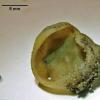
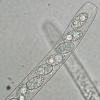
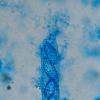

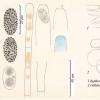
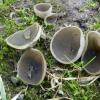
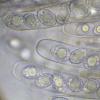
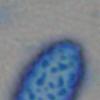
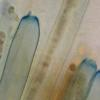

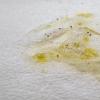
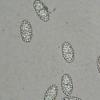

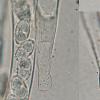



 00204-0001.doc
00204-0001.doc